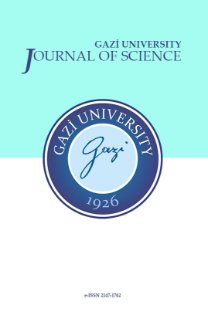Experimental Investigation of a Two Dimensional Heat Transfer Performance of Open-Cell Aluminum Foams with the Gis-Based Support Methodology
___
- Banhart, J., “Aluminum Foams for Lighter Vehicles”, International Journal of Vehicle Design, (2003). Kurtbas,
- I., Celik, N., Dincer, I.,” Exergy transfer in a porous rectangular channel”, Energy, :451–460, (2010).
- Boomsma, K., Poulikakos, D., Ventikos, Y., “Simulations of flow through open cell metal foams using an idealized periodic cell structure”, International Journal of Heat and Fluid Flow, :825–834, (2003).
- Sertkaya, A.A., Altınışık, K., Dinçer, K., “Experimental performance of aluminum finned heat exchangers and open-cell aluminum foam heat exchangers”, Experimental Thermal and Fluid Science, 36:86– , (2012). of thermal Babcsan,
- N., Meszaros, I., Hegman, N., and “Thermal measurements Werkstofftech 34:391–394, (2003). conductivity on aluminum foams”,
- Liqun, M., Zhenlun, S., Deping, H., “Cellular structure controllable aluminum foams produced by high pressure infiltration process”, Department of Materials Science and Engineering, Southeast University, (1999). :785–789,
- Sertkaya, A.A., “The production of aluminum foam as heat exchanger & heat transfer modeling”, PhD Engineering, Graduate School of Natural and Applied Sciences, Selcuk University, Konya, Turkey, (2008). of Mechanical
- Kurtbas, I., Celik, N., “Experimental investigation of forced and mixed convection heat transfer in a foam-filled International Journal of Heat and Mass Transfer, :1313–1325, (2009). rectangular channel”,
- Uzair, M.S., “GIS tools for water, wastewater, and storm water systems”, New Ages International Publishers, New Delhi, (2005).
- Dilek, E.F., Sahin, S., Yılmazer, I., “Afforestation areas defined by GIS in Gölbası specially protected area Ankara/Turkey”, Environmental Monitoring and Assessment, 144(1-3): 251–259, (2008).
- Durduran, S.S., “A Decision Making System to Automatic Recognize of Traffic Accidents on the basis of a GIS Platform”, Expert Systems With Applications 37(12):7729-7736, (2010).
- Burrough, P.A., McDonnell, R.A., “Principle of Geographical University Press, New York, (1998). Systems”, Oxford Yomralıoglu, T.,
- “Geographical Information System: Basic Concepts and Applications”, Second Edition, Seçil Offset, Istanbul, (2002). www.m-pore.de, (2012).
- Fazal, S., GIS Basic. New Age International Limited Publishers, New Delhi, (2008). www.okulweb.meb.gov.tr/01/17/972369/Dökümanl ar/SICAKLIK.pdf, (2012).
- Yayın Aralığı: 4
- Başlangıç: 1988
- Yayıncı: Gazi Üniversitesi, Fen Bilimleri Enstitüsü
Servet ÇETE, Gökçen Karpuz, Ahmet Yaşar
An Upper Estimate of Complex q-Balázs-Szabados- Kantorovich Operators on Compact Disks
Kadir DOGANAY1, Merve Goksin KARAASLAN2, Burhan ATES2, Aliye ALTUNDAS1,
Aliye Altundas, Kadir Doğanay, Merve Göksin Karaaslan, Burhan Ates
Ummihan Taskoparan Yilmaz, Guler Somer
A. Manimaran, B. Praba, V. M. Chandrasekaran
